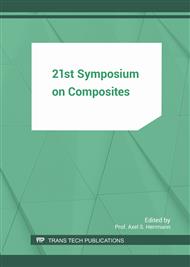p.723
p.732
p.740
p.745
p.753
p.763
p.778
p.786
p.793
Light Weight Vehicle in Natural Fibre Composite
Abstract:
Combined with shared service points in prime locations the use of Light Electric Vehicles (LEV) can help optimize the cost expensive „last mile“ of parcel service. [1] At the same time, a shared service point enables the switch from diesel driven engines to muscle-powered electric driving in cities. It is known, that in city operating courier services up to 80 % of actual used diesel fuel can be substituted by muscle supported electric driving. [2] To cover the needs of global operating parcel services a muscle-power supported LEV must meet the requirements of ergonomics (regarding usability in the modes drive and delivery) and parcel security. To gain economic benefits the construction of LEV for parcel delivery should be flexible enough to meet specific needs in cities - like the topography of the roadways, daily amount of goods to deliver and the legal provision at the local situation. Production of LEV in small and medium enterprises will unlock a niche for first industrial uses of Natural Fiber Composites (NFC) in load-bearing structures. By pre-impregnation a replicable quality will bring the structural light-weight construction with NFC to new fields of use, as the construction of a LEV will demonstrate. At the end of its life cycle, the vehicle proves further economic and ecological benefits due to the use of NFC: A cost effective thermal conversion under a reduced release of fossil CO2 is guaranteed. [3; 4]
Info:
Periodical:
Pages:
753-759
Citation:
Online since:
July 2017
Authors:
Price:
Сopyright:
© 2017 Trans Tech Publications Ltd. All Rights Reserved
Share:
Citation:


